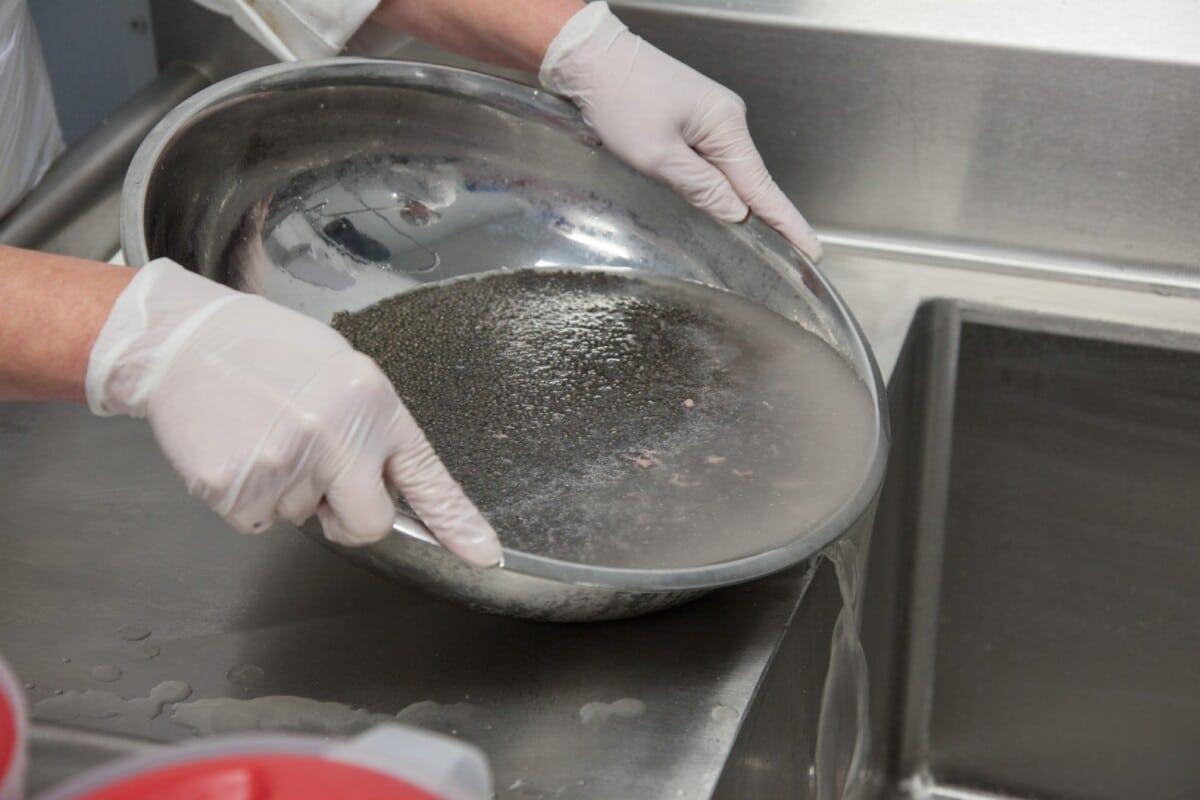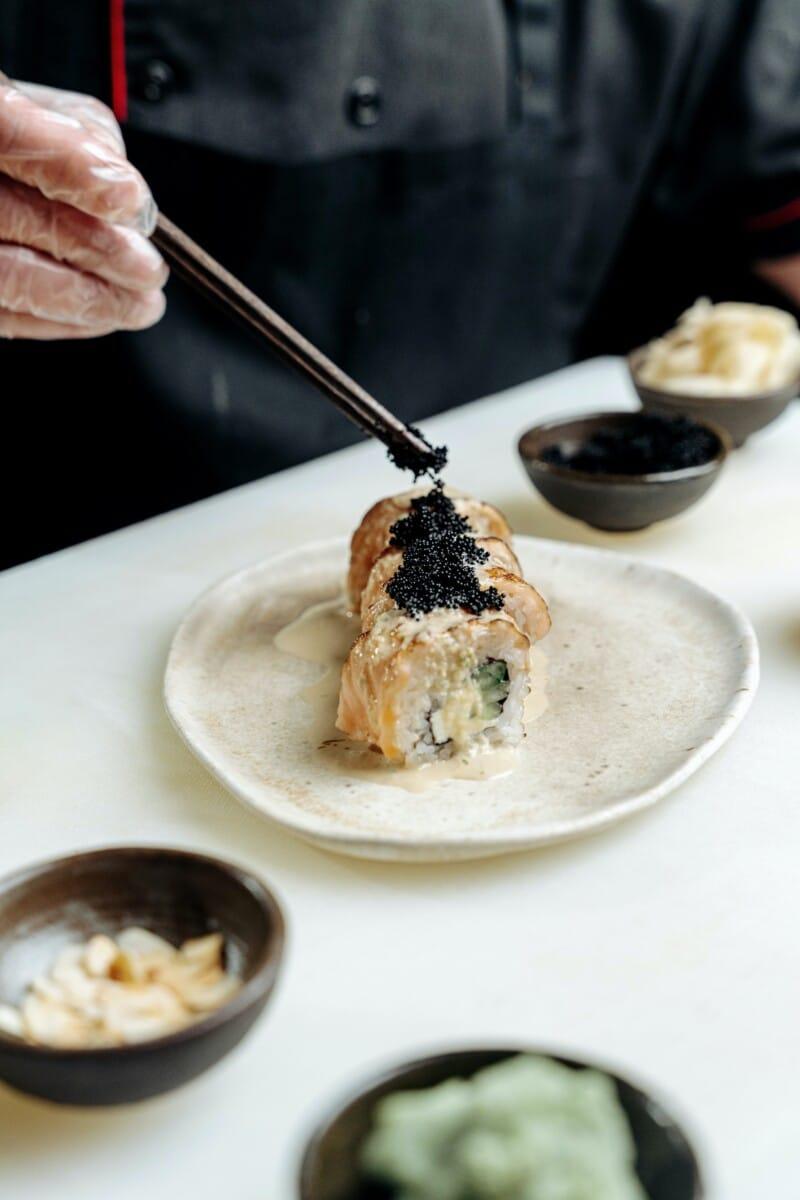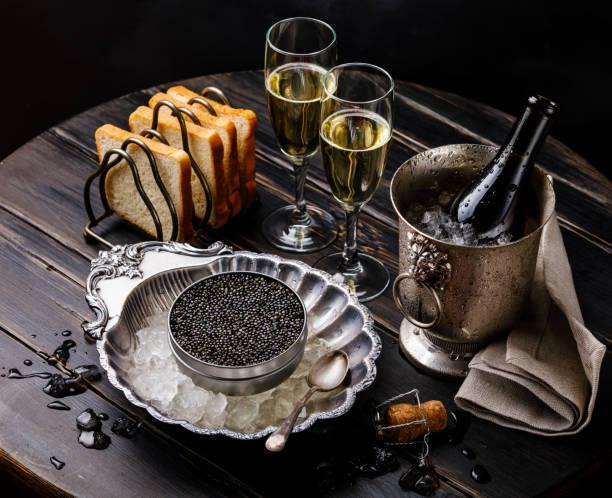Caviar is one of the best expensive foods you can purchase, but it doesn’t have to be an unattainable luxury. It has also been considered too rich and decadent to be included in the diets of ordinary people. Caviar isn’t just suitable for special occasions like birthdays or weddings; when paired with the right things and eaten in small quantities.
Caviar can add flavor and texture to your everyday meals! If you learn how to eat expensive food, you might find that this delicacy fits your budget nicely. This article, the best expensive food: how to eat Caviar will teach you without feeling guilty.
THE BEST EXPENSIVE FOOD: HOW TO EAT CAVIAR
What is Caviar?

From a culinary perspective, Caviar is one of those foods that people either love or hate. On the one hand, it’s incredibly high in calories and fat content, and on another, it tastes fantastic. The trick is to eat just enough of it to enjoy its distinct and delicious flavor without breaking your calorie budget for that day—or overdoing it so much that you create another type of health problem altogether.
Different Types of Caviar
There are many different types of Caviar as expensive food. Black Caviar is mainly from sturgeon, and Beluga is one type of Black Caviar. White caviars are made from fish, including salmon, trout, and redfish. The U.S., Australia, and other countries have banned fishing for wild Caviar. Because of overfishing, many species could go extinct soon if they aren’t helped.

So while it may seem extravagant and expensive food to eat something so rare and beautiful as wild white sturgeon roe or golden sevruga eggs, you should feel good about knowing that eating them doesn’t contribute to overfishing; farmed varieties are just as good when it comes to taste and texture. Whether your budget allows it as expensive food, buy domestic farm-raised instead of imported wild Caviar whenever possible.
Most Americans think that American food is more expensive than ethnic cuisine. This isn’t always true, though. American food isn’t any more expensive food than European food because everything in Europe has a high tax! Most foods are much cheaper in America than in Europe (if you’re looking at their dollar price).
Where Does It Come From?
The popular perception of Caviar is that it’s made from fish eggs, which is true. The eggs in question belong to the sturgeon; specifically, they’re Beluga or Siberian Sturgeon eggs. These are large fish primarily located in Russia, Iran, and surrounding countries—because of their rarity and unique flavor profile.

Most Caviar on U.S. menus comes from farmed American Sturgeon (which has a different texture than wild Caviar). Most types of Caviar cost anywhere between $20-40 per ounce. A standard serving size for many restaurants is a one-half ounce, which runs about $100 and this is classified as expensive food.
If you want to try it at home but don’t want to break your budget on expensive food, cheaper options like American farm-raised trout roe (aka red salmon caviar) or lumpfish roe (aka gray mullet roe). Both options run about $10 per half-ounce, which is not classified as expensive food.
What does it taste like?
It’s fishy (get it?), but it doesn’t have any flavor, unlike other fish. Instead, it depends on what’s paired with it. If you don’t know how to pair Caviar, then you might as well not even bother buying it. The best Caviar is served with sour cream, chives, boiled egg whites, and blinis – a small pancake that takes well to melt butter.
The butter is spread on top of each blini in dollops before placing a spoonful of Caviar on top. It works like magic. As for preparing your Caviar at home, recipes online make things easy. Just buy some sturgeon roe and follow directions! Once you try your hand at making Caviar, I promise you won’t go back to eating regular old fish eggs again!
How do you make Caviar taste good?
Good Caviar as an expensive food is salty and has an almost buttery texture. Mix equal parts water with equal parts caviar (1 tablespoon each) and swirl together until you achieve a creamy consistency. Dip a cracker into the mixture and pop it into your mouth. Still not enjoying Caviar?

You can serve Caviar the expensive food on its own with blinis and a dollop of crème fraîche or sour cream. You can also serve Caviar on chilled boiled potatoes or rye toast points. One of our favorite ways to eat Caviar is over ice cream, particularly vanilla ice cream.
Be sure that you allow your high-quality expensive food Russian Caviar to come back to room temperature before serving, so it doesn’t feel too cold on your tongue; conversely, don’t let it sit out too long, or you risk getting dried out and losing its luster.
If you use lemon juice or vinegar as an accompaniment, do not add them until just before serving, and this will keep your expensive food from becoming overly salty. If you have any leftover caviar after an event, make sure to store it in an airtight container in the refrigerator, and this should last for about five days.
How Is Caviar served?
Before you pop open a container of Caviar, you should know how it’s going to be served. For those who enjoy eating Caviar alone (or on toast points), serve your favorite kind(s) in glass bowls or individual shot glasses.
For those who want a more elevated experience with the expensive food, try arranging your selections on ice plates so that all of your guests can share and sample multiple varieties. You should consider how you want to eat it—with blinis or crackers for dipping.

Add some sour cream for dipping with blinis, but skip it if you’re snacking with rye or pumpernickel bread points. Otherwise, dip plain crackers into sour cream before eating expensive food with cured meats or other cheeses.
Caviar Serving Temperature
The best Caviar will always be served chilled, between 35 and 40 degrees Fahrenheit. A little ice in your dish is fine if you can’t get it that cold, but don’t serve your expensive food at room temperature or warmer.
Colder foods have a softer texture that allows for easy slurping and tends to release less of their oil-based flavor compounds when eaten (more on those below). There are very few foods that taste better when served warm, so avoid doing Caviar above 50 degrees.
How Much Caviar To Serve
If you’re serving Caviar, it’s good to have plenty on hand. A pound of Caviar goes a long way, especially since most people don’t need more than one or two spoonfuls when served by weight. For reference, the proper amount for four guests is about one-half ounce per person—four ounces in total.
When served by weight (not volume), one ounce of Caviar will serve four people nicely. There are times when even a quarter ounce per person will suffice; it all depends on your choice of delicacy and the number of guests. Note that farmed Caviar often contains considerably less sturgeon roe than its wild counterparts, so adjust accordingly!
Expensive Food Caviar Serving Sets
So, you’ve been asked to serve Caviar at a party, but you don’t have any caviar serving sets. Don’t worry! You can pick up a set at any good department store or online retailer. Some serving sets come with little dishes and spoons, while others do not. If your set doesn’t include these things, you can easily pick up small bowls at Target or Crate & Barrel places. Fill each bowl with a spoonful of sour cream and add a dollop of Caviar on top—about 1/8th of an ounce per person is plenty!
Tips for eating Caviar
You can’t eat Caviar with a fork. The serving spoon that comes with your caviar order is usually an offset spatula—this will help you scoop out servings of fish eggs without making a mess on your tablecloth or gilding your teeth in excess roe. You can eat just one or two bites, but there’s no need to judge others for enjoying their Caviar (or ordering multiple bowls).

Enjoying Caviar is about more than just eating it; experiencing it in all its olfactory, visual, and sensual glory, including good wine and conversation (in moderation). There are many different types of Caviar, so try them all! Sturgeon roe from America and Canada tend to be milder in flavor, while Russian sturgeon eggs are saltier.
If you don’t like Caviar, don’t feel bad—it happens to everyone at some point! If you like it, have as much as you want! Much of what we know about sturgeon conservation today comes from studying beluga populations because they are easy to track due to their distinctive white coloration patterns. Sturgeon populations are threatened by overfishing and poaching because they produce high-value products such as meat and eggs that command high prices on black markets worldwide.
Health Benefits of Caviar
There is no doubt that Caviar is a delicacy, but what about all those health benefits? While few people eat Caviar regularly, there are many health benefits associated with caviar consumption. First of all, it’s low in calories and contains high protein and vitamins A, B12, and D. The roe is an excellent source of omega-3 fatty acids and vitamin E. According to a study published in Nitric Oxide Journal, it also has antioxidant properties that help lower cholesterol and promote heart health.

To get these nutrients in your diet without shelling out for tin at Whole Foods, try eating fish like salmon or trout. Both contain similar amounts of omega-3 fatty acids and have comparable calorie counts, and salmon even has more calcium than Caviar! If you still want to treat yourself, consider trying some imitation caviars on for size—they contain similar amounts of healthy fats and proteins as authentic Caviar does.
Side Effects Of Caviar
Several studies have shown that Caviar and other seafood, such as salmon and cod, are excellent sources of omega-3 fatty acids. These essential nutrients help reduce your risk of developing a wide range of diseases, including hypertension and heart disease. As a general rule, you should try to include a variety of seafood in your diet for overall health benefits.
However, despite its excellent nutritional profile, not everyone is suited to eating Caviar or other types of fish that come from similar waters. So if you’re thinking about incorporating more fish into your diet but want to know more about their potential side effects first, read on for information from some top healthcare professionals.
Conclusion
There’s nothing that compares to Caviar. There is a lot of expensive food in the world, but what is their calorie content? Caviar is still the best and most expensive food in the world, maybe it is because of the strict and peculiar procedure of its production. It’s a foodstuff that is extremely expensive, but you’ll never get tired of it. If you’re looking for something worthy of luxury, you’ve come to the right place. Make sure you follow these steps, and your party will be rocking!